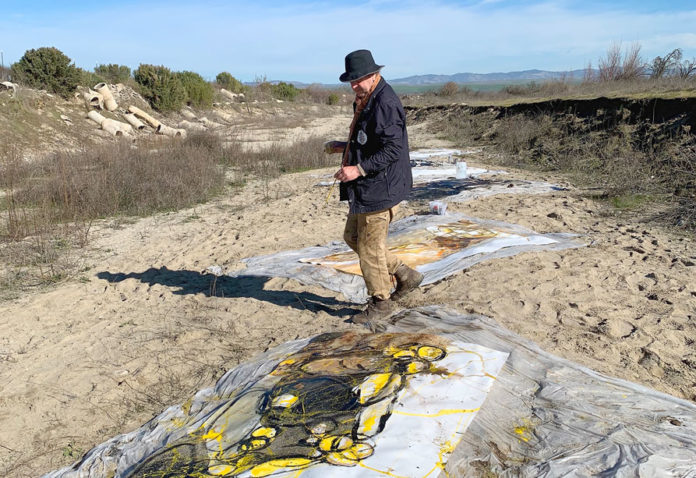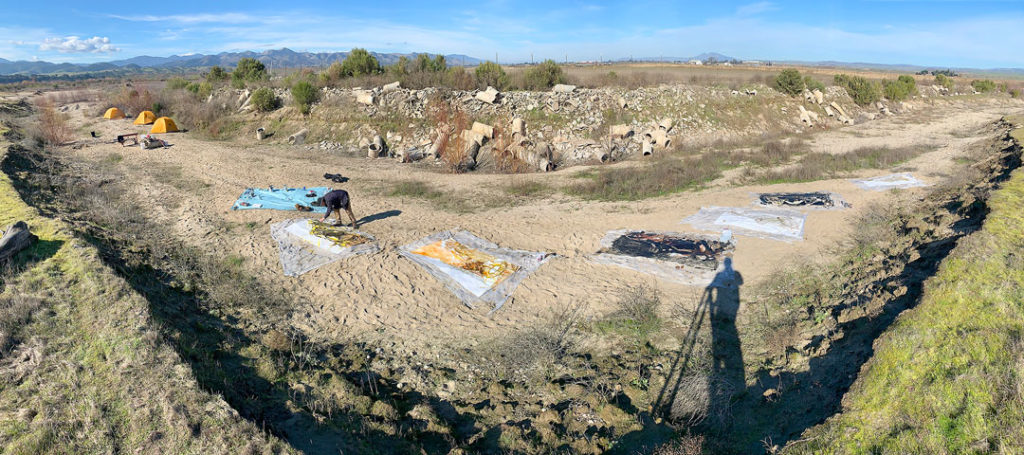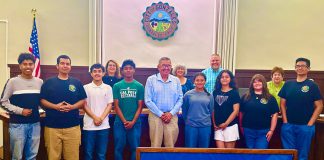
SALINAS VALLEY — A secret garden named Lesnini Field has been created along the Salinas River in South Monterey County to showcase art and to emphasize discovery.
Created by California-based visual artist and writer Erik Bakke and Dutch visual artist and educator Andre Dekker in November 2019, the project used former farmland that went into disuse after flooding in 1995, having undergone the process of being reclaimed by nature.
“It is a plot of wilderness that includes many of the attributes one might plan for a public garden — a pond, a maze, flowing water, an island, vistas,” said Bakke and Dekker in a joint statement.
The location is on private property south of King City, which is why Bakke and Dekker invite people to the field upon request.
“The viewer is left to wander the property and discover the distinct areas and attributes of the field,” the artists said. “The Italian tradition of a secret garden is not to hide the garden from the public but to invite viewers to a garden that requires discovery.”
The property in particular belonged to the Lesnini family, Swiss Italians who immigrated to the area and began farming the property more than a century ago, and who Bakke is related to on his mother’s side. The site’s lack of use has left some areas blocked off by dense barriers of brush.
“We will leave some areas inaccessible,” they said. “Having created new paths increases access and allows a visitor to use the site as a panopticon — as a place to see 360 degrees of the surrounding land use outside of the site itself.”
With such a vista, a viewer can see the dynamics of how the Salinas River shapes the land, wildlife and vegetation within the changing ecology. While there are plans to plant trees to help protect the land, the artists said they are less interested in leaving permanent artwork or having large numbers of visitors at the site.
“We want to work with the idea of ‘slow art’ and big pieces of uninterrupted time for seclusion,” they said. “For example, we used Lesnini Field over the last couple weeks to create six large paintings on site. We used charcoal and burnt clay left from a recent fire that burned a couple acres.”
Lesnini Field is intended to last indefinitely and the artists are open to hear suggestions and proposals for the site. A viewing structure and shelter is already planned for the future. The bungalow itself will incorporate elements of the faces of horned owls in the design.
“Andre’s public art organization Observatorium has spent the last two decades creating monumental, sculptural architectures that invite viewers to consider where they are and contemplate their environment,” they said.
While the bungalow is planned to be the last permanent structure built, Bakke and Dekker said the project and the use of the site, including creating temporal works and works that will be removed, will “continue indefinitely.”
The artists have spent the past several weeks since November working on the site as well as hosting guests.
“Some were captivated by the natural environment and others were also interested in our interaction with this environment,” they said. “We won’t so much have tours as provide access for those who have a specific interest in interacting with the site.”
In their time at Lesnini Field, the artists said they discovered it is part of a corridor for wildlife along the river, and that the wider the corridor, the better for both farmers and nature.
“Wildlife poses a threat to monoculture by spreading disease, and monoculture is a threat to wildlife by using chemicals,” Bakke and Dekker said. “Once the river was the boundary between the two, now Lesnini Field forms a buffer zone, favorable to both.”
Working at the site has shown the artists to refrain from simply wanting to clean up human-made objects. Broken concrete pipes were scattered as part of a former levee system, but Jennifer Robin Berry, a visiting ecologist, showed them how the pipes had become a habitat for rodents, foxes and other animals.
Other lessons from the site included learning how robust nature can be. The recent December rains left Lesnini Field unharmed while nearby farmland was flooded.
The duo decided to collaborate after Bakke’s visit to Andre’s sculpture, Zandwacht, in Rotterdam, Holland, in summer of 2019. Rather than the large cathedral-like architecture of Zandwacht, the work at Lesnini Field is planned to be more subtle.
“To emphasize the respect for nature’s capacity to turn farmland into a thriving wild place full of life, we will write field reports,” they said. The reports document art and events within the field and become a lasting form of literature.
There are currently six large paintings on display at Lesnini Field, with the plan to display them in the future at a museum or gallery. The site will continue to be used as an outdoor studio for painting, writing and performance.
Several artists have declared interest in the project, including Brandon Ballengée, who will install “Love Motel for Insects,” which is meant to bring “humans and arthropods” together.














